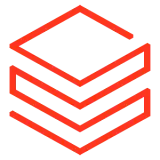

Integrate your Databricks Data Warehouse with Webhooks
Don't go through the pain of direct integration. RudderStack’s Reverse ETL connection makes it easy to send data from your Databricks Data Warehouse to Webhooks and all of your other cloud tools.Easy Databricks to Webhooks integration with RudderStackRudderStack’s open source Reverse ETL connection allows you to integrate RudderStack with your your Databricks Data Warehouse to track event data and automatically send it to Webhooks. With the RudderStack Reverse ETL connection, you do not have to worry about having to learn, test, implement or deal with changes in a new API and multiple endpoints every time someone asks for a new integration.Popular ways to use Webhooks and RudderStackFrequently Asked QuestionsAbout Databricks
Send data anywhereAutomatically send data to any destination that supports webhooks
Customize event payloadsEasily modify payloads to meet the requirements of multiple webhook destinations
Ingest from any webhookAutomatically ingest data from any source that supports webhooks
How do you integrate Databricks with Webhooks?
With Rudderstack, integration between Databricks and Webhooks is simple. Set up a Databricks source and start sending data.
Is it expensive to integrate Databricks with Webhooks?
Pricing Databricks and Webhooks can vary based on the way they charge. Check out our pricing page for more info. Or give us a try for FREE.
How long does it take to integrate Databricks with Webhooks?
Timing can vary based on your tech stack and the complexity of your data needs for Databricks and Webhooks.
About Webhooks
Webhooks allow you to send the events generated via the RudderStack SDK to your own backend. It is useful in cases where you want to apply some custom logic on the event payload before sending it to your preferred destination platforms.
Once webhooks are enabled as a destination in your dashboard, RudderStack forwards the SDK events to your configured webhook endpoint.
Storage layer that offers reliability and security on your data lake for streaming and batch operations